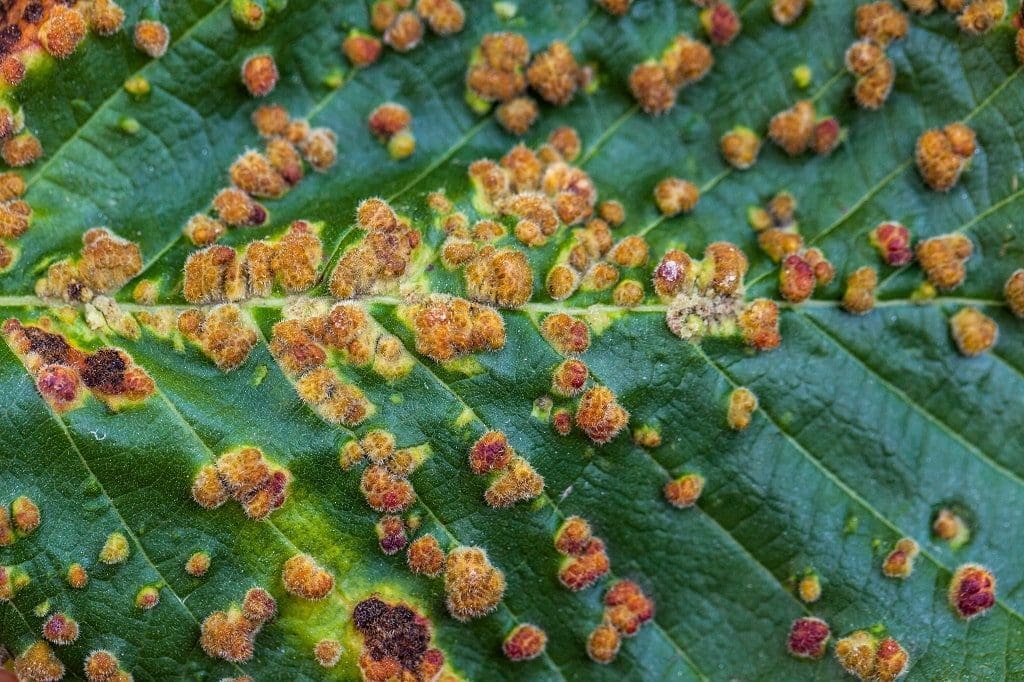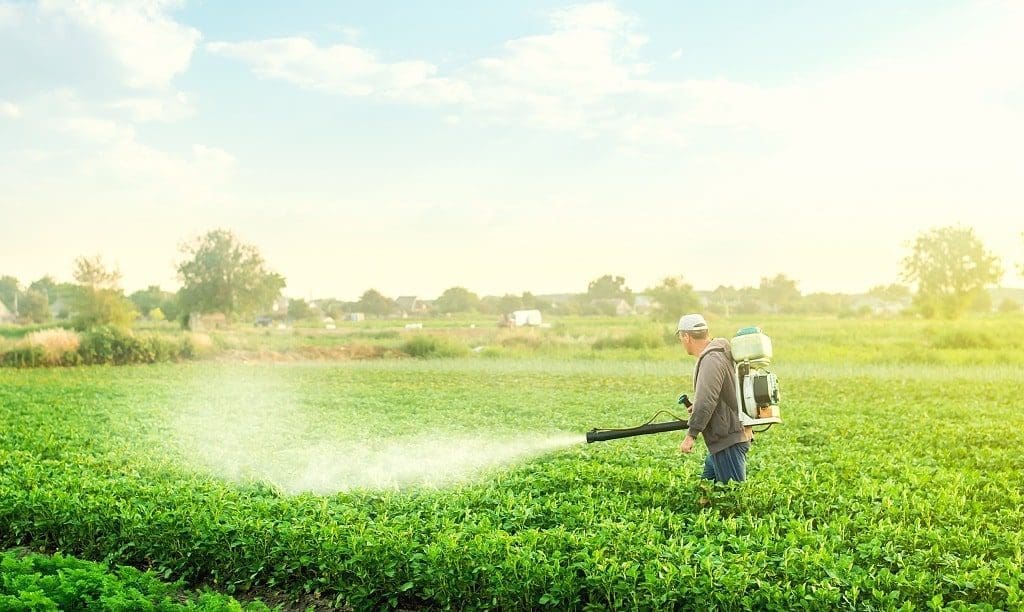At Earth Development, we help businesses throughout the Midwest manage and maintain healthy lawns, shrubs, and trees – and we also bring you important information about issues that could affect your outdoor space.
In this piece, we’ll explore rust lawn disease, how to identify it, and what you should do about it.
What Is Rust Disease?
So, let’s start with what rust disease is. This is a fungal disease that typically affects herbaceous and woody plants.
It’s unlikely to kill those plants, but it does make it harder for those plants to grow healthily. That means you’re likely to see your plants and shrubs looking a little lackluster, growing fewer flowers, and even taking longer to flower.
What Causes Rust Disease?
This rust plant disease can be caused by many things.
- Fungi can survive and grow by infecting perennial plant parts, including crowns and branches.
- Rust fungi produce a spore at the end of the growing season which can survive through the winter, and these spores can infect stems or survive in plant debris on the ground.
- Rust fungi can easily be introduced to your yard from another yard just by a strong gust of wind carrying the spore.
- Water may also spread rust fungi spores.
- Rust fungi itself – and not just the spore – requires live plant tissue to live. Therefore, if you have plants in your garden, it can quickly grow and spread.
It’s hard to prevent this grass rust disease when the conditions are generally right for it to grow in any yard that has plants or shrubs.
How To Identify Rust Disease On Your Plants
Okay, so we know what rust grass disease is and how it spreads – now let’s look at how we can identify it.
Because this disease specifically affects plants, we’ll need to be looking at the leaves to identify this fungus. The first thing you are likely to notice is yellow, orange, or red spots that grow in clumps all over the leaf.
You’ll also likely notice slightly raised pustules of powder-like spores on the lower surface of the leaf, right beneath those spots we mentioned. The pustules can technically occur on any green part of the plant, but you’re most likely to see it on the lower part of the leaf.
The powdery spores are typically brown, orange, or yellow. If you can’t see it on the leaf, you will be able to see it on your hands after touching the leaf.
Leaves that have become severely infected by the fungus are likely to fall off or turn a yellow-brown color, and the plant is likely to begin to wilt – even if it doesn’t die.

How To Treat Rust Disease On Plants
If you’ve identified these symptoms on your plants, it’s time to take action – but don’t forget that prevention is always the best form of treatment. At Earth Development, we handle all your landscaping and yard maintenance needs, ensuring that your plants are not overwatered and that there is good air circulation inside the branches and your plants. This helps prevent the build-up of spores and makes it harder for the fungus to grow and allows leaves to dry more quickly.
Our expert landscaping is the first line of defense for your plants, but if you’re already experiencing rust, the next step is removing any leaf that has been affected. Make sure you dispose of those leaves and don’t compost them or leave them in your yard, as this will help the fungus spread.
You may also wish to use fungicide products, like neem oil, to treat the plant and kill off any remaining fungus – but always be sure to remove any affected leaf.
How To Prevent Rust On Your Plants
In terms of rust prevention – which should always be your first plan of action – we have some top tips to help keep your plants in good shape.
- First, dust your plants with sulfur in the springtime to help stop infection, or to stop any existing infections from spreading to other plants.
- When planting new plants, be sure to spread them out adequately to promote better air circulation. This helps leaves dry faster and prevent fungus growth.
- When watering your plants, try and avoid getting the leaves wet.
- Use fungicide.

Expert Landscaping and Plant Maintenance Services Across the Midwest
Maintaining your plants and lawn is a tough job – especially for business owners. If you’re looking for help handling your landscaping needs, and want to keep your business property looking great all year round, we’ve got the local team of experts you need.
Earth Development provides professional landscaping services, helping you keep your lawn, trees, and plants healthy. For more information or a free quote, get in touch today!
